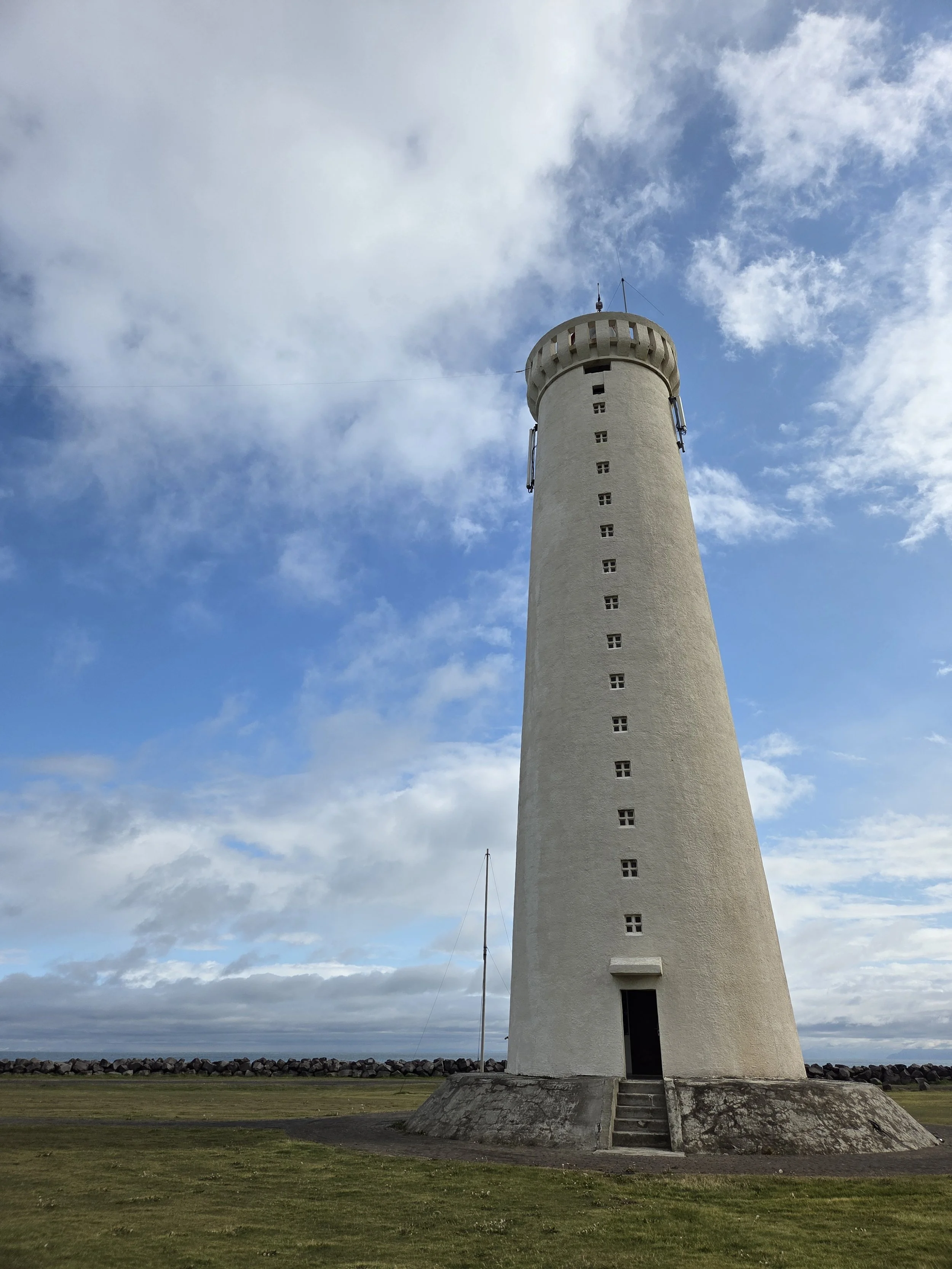Iceland: The Reykjanes Peninsula
At last the time had arrived. The Whoo-hoo calculator reached its max and we were off. Iceland. The land of fire and ice. Our outbound airport and flight experiences were smooth and we landed at 6:00 on a gray rainy morning on Saturday, June 7th. Steam and spray blew off the runway as the plane touched down. The customs agent asked a few questions and stamped our passports, granting us entry to the country. Although I’d laid over in Amsterdam, Frankfurt, and London before, this was my first true European trip. A breakfast of pretzels and an egg sandwich, washed down with some coffee helped perk us up and shake off some of the jet-lag. Our rental car was a Toyota Highlander from Lotus Rentals which we named Snorri, after Snorri Sturluson, the famed Icelandic historian and poet. The first stop was the Kronan grocery store in Njarðvik (pronounced Nyardth-vik) to pick up supplies for the trip. We were amused by the different names for the same products back home, Cool American Flavor Doritos instead of Cool Ranch was the funniest. My eldest child, having only acquired an hour of sleep on the flight as she reveled in the freedom to watch movies and TV, broke down in tears in the store from exhaustion. It was a bit of a rough start.
Our room in Reykjavík would not be available until 15:00, so I suggested we head up to the town of Garður (pronounced Gard-thur) at the far end of the Reykjanes peninsula. There was a lighthouse and a museum near the beach and some fresh air would allow us to stretch our legs before heading into the city. My eldest fell asleep in the car, so my youngest and I went out on foot.
It was chilly, especially considering the week before we had been in mid-80’s temps back home. Here on the west end of Iceland, with a steady 10 mph wind and a high of 45, we were cold. The stench of the tidal flats around the lighthouse platform assailed our noses as we walked out on the pier. Across the Faxafloí Bay were snow-capped mountains surrounding Hvalfjӧrdur, their peaks obscured by clouds. There are two lighthouses here. The old Garður lighthouse, with its square column adorned with two orange stripes, is short by lighthouse standards at only 40 feet high. The advantage is that the light would be visible in low-hanging clouds. The other lighthouse, Garðurskagi, was built in 1944. A commemorative plaque is posted on the inside of the entrance, honoring the bravery of Icelandic fisherman who, in 1942, rescued American soldiers from the Navy cutter Alexander Hamilton after it was torpedoed by a German submarine.
On the beach, common Eiders were abundant in the retreating tide. We also saw black-tailed godwits, snipes, Eurasian Oystercatchers, common-ringed plovers, and white wagtails. A boat, the Holmsteinn, was available for tourists to board. The Garður museum is free to the public and has an interesting collection of old engines, radios, and household appliances from years past. Our favorites were the working rotary phones. I made small talk with the guide in Icelandic, which brought a big smile to my face. My youngest was confused about what was going on.
Black-tailed Godwit
Common Eider
With an extra nap in, we headed into Reykjavík to the Botanical Gardens and the Zoo. The former has a cute little cafe inside a greenhouse with a koi pond running through it. The latter is a zoo in an academic sense in that it has animals in captivity. There are two seals, two reindeer, a number of domestic animals like chickens and sheep, and two arctic foxes. Reykjavík is the world’s most northerly capital, so there are not many species that would do well there in the long, cold winters beyond the native species. The kids burned off some jet-lag at the adjacent park on a pirate-ship themed playground (why didn’t we have any of those growing up???). A pit sponsored by Volvo Mining had free, electric excavators for the kids to dig with in the sand. The one across from our bench was broken and I heard several people disappointedly try to use it and then say something that sounded like “Thetta air bila”. I knew thetta er means “that is”, but I did not know the last word. I inquired with an AI to find that what I was hearing was “Thetta er biluth”, meaning “This is broken”. Biluð (Bee-luth) means broken, but specifically refers to something mechanical that’s broken. This new knowledge on hand, I confidently reported to a young mother with a child that “thetta er biluð” as they attempted to use the mini-excavator. She smiled and thanked me in Icelandic.
This is Icelandic food?
Our playtime done and jet-lag setting in, we retired to our apartment before heading to dinner at American Style. It’s a popular chain of restaurants in the country that serve, well, American-style burgers, fries, and other greasy dishes you would find at most American chain restaurants. The decor consisted of a big, wooden American flag and photos of Hollywood celebs. We wanted some Icelandic food on this trip for sure, but in a way we were happy to have some comfort food thousands of miles from home.
Although the sun was still out, we retired early to get ourselves adjusted for a long week abroad.






